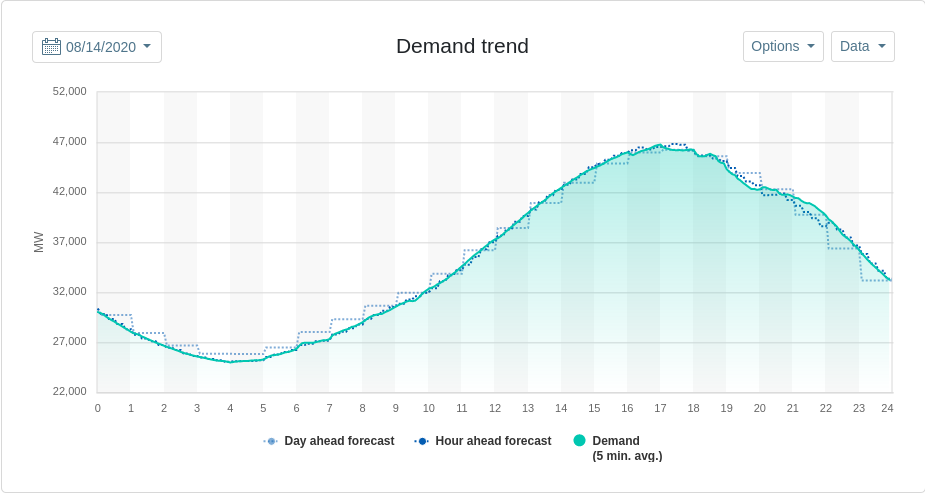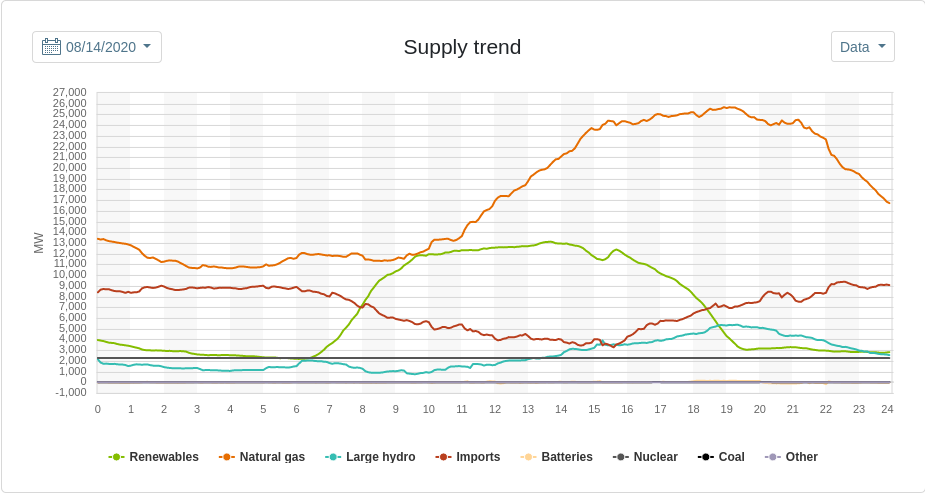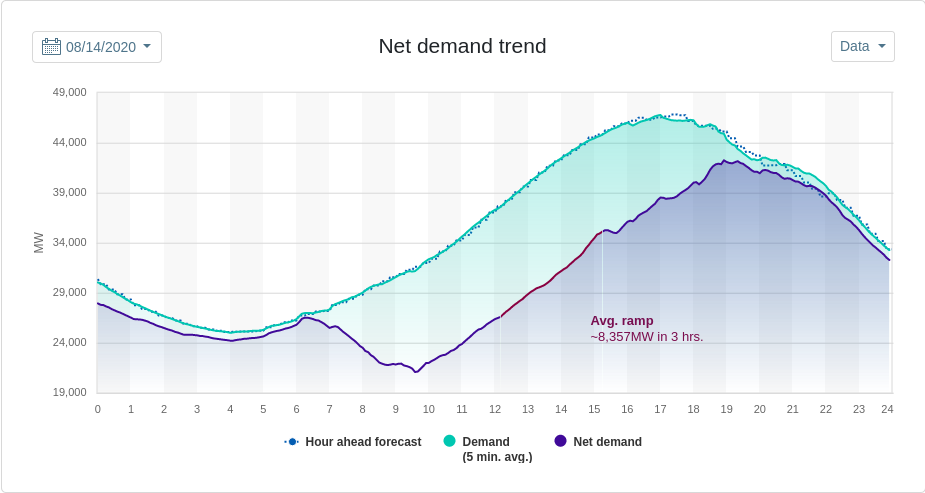WetEV said:
Charging is usually a deferable load, most of the time. You come home, plug in, and usually don't care if the car charges at 11pm or 3am. Or in a solar heavy grid, plug in at work and charge while there is excess solar.
Grids always have periods of excess capacity.
There are sometimes long periods (many hours) when they don't. Sometimes http://www.caiso.com/ issues alerts. Here are some such tweets:
https://twitter.com/california_iso/status/1302789196051034112
https://twitter.com/California_ISO/status/1316550657994903553
Flex alerts are issued actually not that infrequently during CA heat waves, esp. if one monitors http://www.caiso.com/TodaysOutlook/Pages/default.aspx or if work sends out alerts that they're going to turn down HVAC due to alerts.
https://twitter.com/california_iso/status/1302790867699167232
https://twitter.com/california_iso/status/1302746155814588417
https://twitter.com/California_ISO/status/1302774220695298048
https://twitter.com/california_iso/status/1294468177800224769?lang=en
https://twitter.com/california_iso/status/1294828860316332032?lang=en
I haven't had a chance nor that much interest to read the final report at http://www.caiso.com/Documents/Final-Root-Cause-Analysis-Mid-August-2020-Extreme-Heat-Wave.pdf that https://pv-magazine-usa.com/2021/01/13/agencies-release-final-report-into-californias-heat-related-blackouts/ points to regarding rolling blackouts that did happen in parts of CA Aug 14 and 15, 2020. AFAIK, the previous time rolling blackouts ever occurred in CA was in 2001 (I was living in WA state at the time) due to the whole Enron scandal.
The below is from my utility (Pacific Gouge & Extort) which serves much of Nor Cal.
https://www.pge.com/en/about/newsroom/newsdetails/index.page?title=20200814_pge_completes_rotating_power_outages_conducted_at_direction_of_state_grid_operator
https://www.pgecurrents.com/2020/08/15/as-statewide-heatwave-continues-pge-encourages-customers-to-conserve-energy-through-wednesday-night/
Not all EV drivers need to charge at work each day, but as you could imagine, if you care about the grid, then that causes extra headaches and coordination hassles at work if you want to limit charging. We have dozens of dual handle ChargePoint CT-4000 EVSEs so I believe our admin could turn down the max allowed load (https://www.chargepoint.com/products/power-management-faq/ is buggy, we have plenty of experience w/the bugs, long story) but if we turned down the rate, then some cars will take much longer to charge and others may not be able to at all. Each handle has its own 40 amp feed.
Not all our EVs drivers monitor communication channels (e.g. Slack or email list).
We also have some Tesla wall connectors in our parking structure (5 100 amp circuits) and I don't know the arrangement under another building of the other WCs. We can't manage those other than by cutting power to them via breakers.



